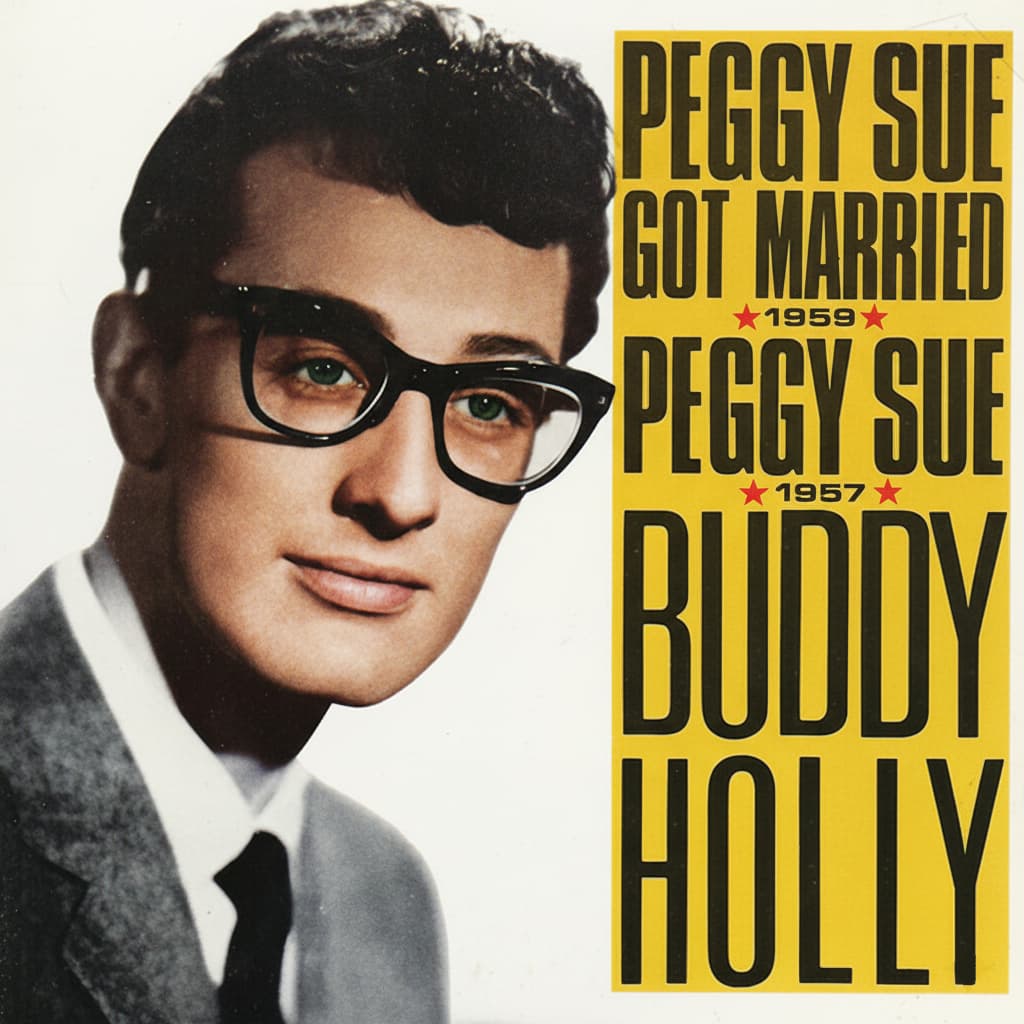
💔 The Bittersweet Epilogue to a Rock and Roll Romance
Ah, the 1950s. A time of earnest dreams, clean-cut rebellion, and the sound of a certain Texan with glasses ringing out across the airwaves. For those of us who remember the crackle of the radio dial bringing us the joyous innocence of early rock and roll, the name Buddy Holly holds a special, heartbreaking resonance. But even a talent as bright and brief as his left behind musical ghosts, like the wistful echo of “Peggy Sue Got Married.”
This song, which acts as a poignant, almost melancholy sequel to Holly‘s huge 1957 hit “Peggy Sue,” was tragically one of the first posthumous releases of the rock era. Released in the US on July 20, 1959, just a few months after “the day the music died,” it was paired as the B-side with another enduring demo, “Crying, Waiting, Hoping.” Though Buddy Holly never lived to see it, the single reached a peak position of number 13 on the Official UK Singles Chart in September 1959, proving that even after his passing, his melodic genius still resonated deeply with audiences.
The story behind this track is steeped in the drama of Buddy Holly’s inner circle. The original “Peggy Sue” was famously named for Peggy Sue Gerron, the on-again, off-again girlfriend (and eventual wife) of The Crickets‘ drummer, Jerry Allison. It was a song rewritten from “Cindy Lou” as a plea to win her back—a testament to the intertwining of personal life and musical output that defined the early days of rock. But by late 1958, the fairy tale, much like many young romances, had frayed. Peggy Sue and Jerry Allison were married, and it was that very marriage that became the bittersweet subject of this sequel. Holly recorded the song as a simple, heartfelt demonstration tape, just him and his guitar, in his New York apartment in December 1958.
The meaning of “Peggy Sue Got Married” is one of gentle, reflective resignation. It’s the sound of a young man learning that life moves on, sometimes with a quiet, unexpected finality. The narrator, presumably a stand-in for Holly or perhaps for the character from the first song, casually learns from a friend that the girl who once filled his world with glorious color is now settled. There’s no big dramatic heartbreak, just the soft sigh of recognition that a chapter is closed. The wistful tone, captured perfectly in Holly’s raw, unadorned home recording—later overdubbed with backing vocals and instrumentation for commercial release—is perhaps what touches us most deeply now. We hear not just the echo of a lost love, but the voice of a young legend, recorded in a moment of quiet reflection, utterly unaware of the swift, cruel fate awaiting him.
For those of us who have lived a few decades, who have seen friends marry, drift away, and found ourselves standing on the other side of youth, the song speaks volumes. It’s about the passage of time and the realization that the intense loves and dramas of our younger years fade into gentle memory. It’s a beautifully simple, honest rock and roll elegy, an unforgettable footnote left behind by a man who changed the course of popular music and then, far too soon, simply faded away. It’s a precious sonic memento, reminding us of the fragility of life and the enduring power of a three-chord song.